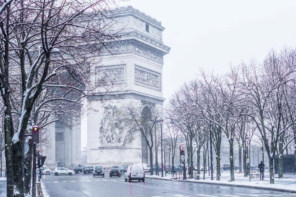
Cape Town is an exciting and diverse city, however, having already visited before, this trip I was looking for more unique things to do in Cape Town besides browsing the stalls at Greenmarket Square and strolling the Waterfront. That’s why I was thrilled to learn that renowned walking tour company Context Travel had just opened in Cape Town.
Specialized in small-sized, expert-led tours in now in 50 cities around the world, Context offer a more in-depth way to truly understand a destination. I also know that this usually means they have a more offbeat tour or two and, sure enough, their Bo-Kaap Tour: Cape Malay Enclave tour instantly caught my eye. There had to be more behind this neighborbood of cobbled streets and colorful houses that has been popularized by Instagram. Join me on this sneak peek of this original Cape Town walking tour below.
Up the Hill to Bo Kaap
Located just a few blocks from famed Greenmarket Square, Bo Kaap clings to Signal Hill, under the shadow of iconic Table Mountain and Lion’s Head. We arrived in front of our tour rendezvous point at the local museum to be warmly greeted by our guide Bilqees. Although originally from Johannesburg, Bilqees has been living in Bo Kaap for over 20 years, something, we learned through her enthusiastic introduction, was not an easy feat. Her personal story was paired with giving us the lay of the land and an introduction to the history of this part of the city, first built to house the original Cape Malay population.

The Cape Malay & Birth of a Community
Taking a secret passageway, we headed towards our first major stop, the Auwal Mosque, the oldest in all of South Africa. Due to Bilqees connections, we were privileged to be able to visit the interior, the perfect setting to discuss the founding of the area and the origins of the Cape Malay. A misleading name, we learned that in fact the Cape Malay were a mix of convicts, political exiles, and later, freed slaves brought to the Cape by the Dutch East India Company from not only Malaysia, but also Java, Ceylon, India and other parts of Africa.
Despite this, most shared a common thread, that of being mostly practising Muslims, something which, in those early days, was not prohibited. We spent some time exploring this topic as well as the fascinating life of the first Imam, Tuan Guru, the first Quran (impressively written from memory and on display in the Mosque) and other important figures to the development of the neighborhood.

Local Traditions, Delicacies & Community Spirit
Leaving the Mosque we meandered through some of the district’s lesser visited streets, which gave us a chance to delve into today’s Bo Kaap. We stopped at some lovely murals to talk about the importance of community events like weddings, one of the reasons, along with Ramadan and the celebration of Eid, for locals to spruce up their houses with fresh, colorful paint.
This tight knit community spirit is manifested in other ways too, like supporting locals who started small businesses in their home. Bilqees explained that some of these have now flourished into shops, cooking schools and other initiatives, like a stand we stopped at selling Cape Malay delicacies. Nibbling on coconut-dusted koeksisters donuts and flavorful samosas we learned, or rather tasted, how Cape Malay cuisine mixes the traditions and spices that were also initially brought over with the early residents from Southern Asia. The tour also pops into a historic family-run spice shop, a sensorial immersion of Cape Malay culinary traditions.

Preserving a Community in Danger
However, its central location and the charms of its attractive historic houses have not gone unnoticed. Bilqees also covered the issue of Bo Kaap’s increasing popularity with “outsiders.” While the community isn’t against different people moving into the area, this gentrification is causing rents to go up, making it no longer affordable for the historic residents of the area. We were fortunate to gain an insider perspective on this through Bilqees who told us about some of the community initiatives to help save the district’s identity and heritage.
Taking a small group tour, like this one of Context and led by a passionate local, instead of a large tour that barely skims the surface of the area, is another helpful way to help preserve this unique and culturally rich district of Cape Town. The insightful experience gave me a whole new understanding of the area, much more profound than merely a collection of colorful buildings. Although, I couldn’t resist taking a photo in front of the perfectly Lily building below 🙂
You can read more about and book this excellent Bo-Kaap tour here. Context has a great range of other tours in their new Cape Town program ranging from history to food. They also have a fabulous excursion to the Cape Winelands. Discover their full program at this link.
Note: Most photos above taken by my talented photographer sister Corianna Heise.
I was a guest of Context Travel, however, all of the opinions expressed above are entirely my own.





















